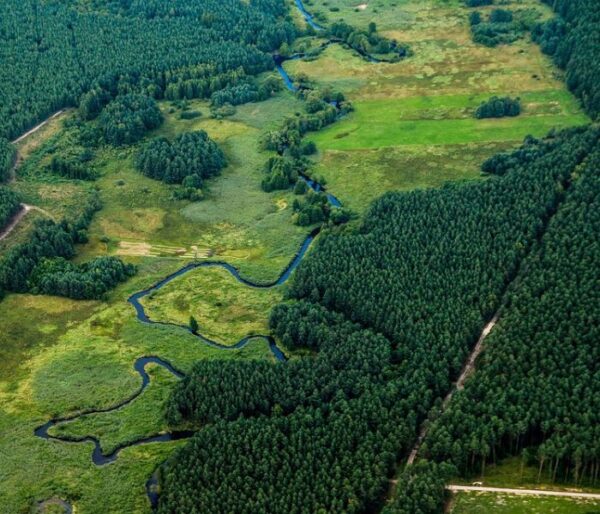Carbon trading involves using CO2 reductions in another activity to offset a company’s own emissions. Typically, this means monetary investments in sectors where it is possible to increase the capture of carbon dioxide or to reduce carbon emissions. Reduction and removal projects are the centers of the offsetting process. Common project types for carbon reduction include:
- Increasing CO2 capture through different forestry projects, like afforestation projects
- Switching to renewable fuels, such as biomass
- Reducing plastic waste
- Increasing solar and hydro energy efforts
56% of voluntary credits issued in 2018 were related to forestry or other land use.
Three types of forestry projects
There are three different categories of forestry projects:
Afforestation projects
Afforestation projects involve planting trees in areas that have not recently had any tree coverage. Often, afforestation projects prohibit any thinning or harvesting activities during the contract period.
A problem in afforestation projects is “leakage”, where reductions from the project lead to increased emissions elsewhere. For example, there might have already been something, like grasslands, absorbing CO2, that has now been converted into forests, which might increase the carbon offsets, but at the same time removes specialized habitats for animals and reduces the local biodiversity of grasses.
Afforestation projects are long-term projects. The land purchase, repurposing, and planting can take several years, without even talking about the seedlings taking 5-10 years, depending on species and local climate conditions, to even start making an impact in terms of carbon sequestration. There is broad consensus that afforestation projects are simpler in terms of additivity, however, they are economically inferior due to very long lead times, the requirement to purchase land, and the complexity of changing the land-use declaration in many countries.
Sustainable forest management projects
Sustainable forest management projects are also known as Improved Forest Management projects. These projects keep carbon sequestration high by restricting commercial thinning and harvesting. Another type of sustainable forestry project is reforestation where previously harvested or naturally depleted forest is conserved. The overall goal of these projects is to increase the wood density and quality.
The forest is monitored to verify CO2 capture and potential carbon reduction. Often, the requirement is that the sequestration must exceed reductions due to fires, damage, or harvesting. Generally, the forest must be certified as sustainably managed before the approval for these projects.
Long-lived wood products projects
Long-lived wood product projects target the end use of the already logged trees. For example, carbon will be retained at a much higher rate in laminated wood products used as building materials than if made into pulp. Therefore, credits can be earned on wood that is used to produce “long-lived wood products”.
Towards a scalable carbon trading solution
The wide selection of projects allows buyers to find a good fit. However, due to the lack of common regulations, the buyer needs to pay attention to the quality and reliability of the credits offered. Accordingly, many companies only buy credits certified by a carbon standard, like Verra or Gold Standard.
While all credible initiatives and projects should be welcomed, afforestation projects have significant shortcomings compared to sustainable forest management. The high capital needs, administrative barriers, and long timelines suggest that sustainable forest management projects are the superior method for scaling carbon capture to the levels required to mitigate climate change.
From a technical point of view, the problems of the current practices and processes are the lack of scalability, cost of verification, and lack of transparency. The current system’s fundamental building blocks originate from the 1990s and were formally established with the 2007 Kyoto Protocol. To move to a scalable and reasonably priced system, we need to update to the state-of-the-art methods.
By applying our state-of-the-art solution to forests in the context of verification of carbon and potential carbon reduction, we can provide the accurate, timely, and scalable information needed for carbon trading. This enables investment and trading on the scale required to mitigate the climate risks we are facing.
To learn more how carbon trading can be made simpler, more up-to-date and scalable, download our whitepaper “Prerequisites for Scalable Carbon Trading”.




